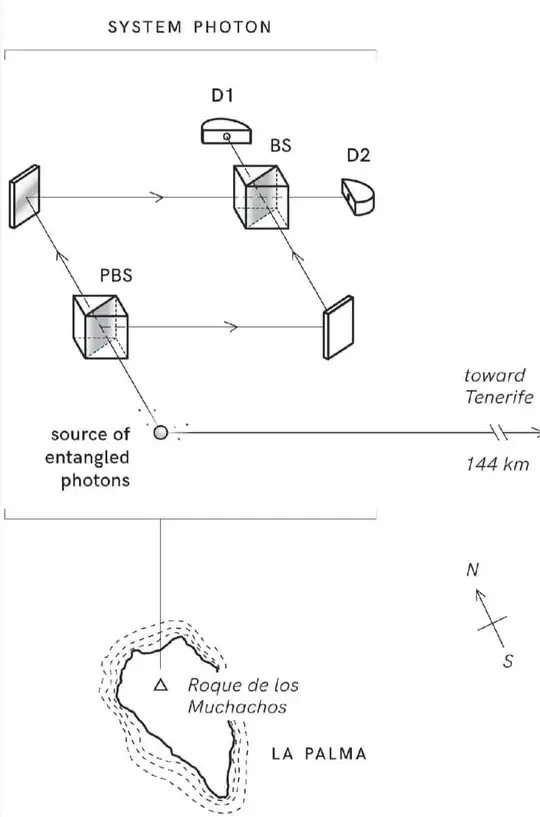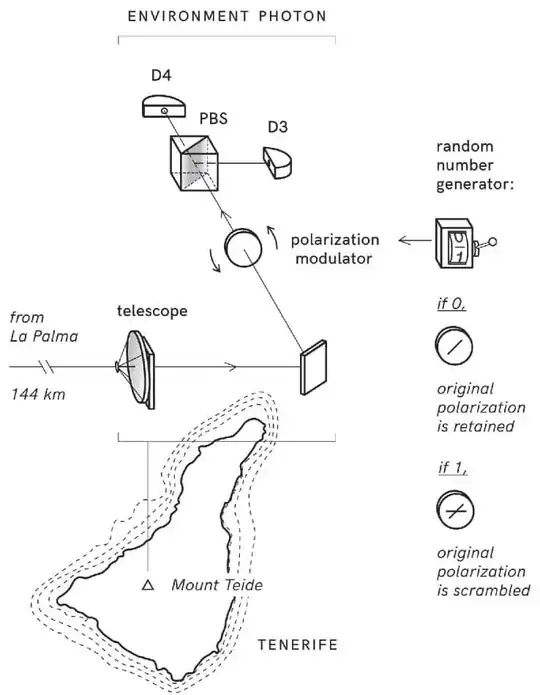this question is a variation of the one posted here. In which the answer seems to be "Bob always sees the same pattern regardless of whether the which-way information is erased by Alice". This seems to be the same answer given here, here, here, and here.
Reading Through Two Doors at Once (chapter To Erase or Not To Erase) one of the experiments described is a similar one led by Zeilinger (I believe this is the experiment, although it doesn't seem to be exactly as the one described in the book). This experiment is described here starting by "In their test, Zeilinger & co. used entangled photons ...". These two images summerize Bob's (La Palma) and Alice's (Tenerife) setup.
In this case, Bob has a Mach–Zehnder interferometer. Alice has a random number generator. When 0 is generated, the original polarization is retained, and the corresponding system photons arrive at D1 or D2 (in Bob's Mach–Zehnder interferometer) in equal numbers. However when 1 is generated, the original polarization is scrambled (the which-way information of the environment photon is erased). In this case - according to the book - all the system photons end up in D1, and none in D2 (in Bob's Mach–Zehnder interferometer).
With this setup, one could think that if Alice always erases the which-way information, all the system photons end up in D1. And if Alice never erases the which-way information, the system photons would arrive in equal numbers at D1 and D2. Thus allowing FTL (faster than light) communications:
- Alice and Bob are in different galaxies, millions of light-years apart.
- Every minute, Bob generates 1M photon pairs, measures how many land in D1, and how many in D2. They are all ending up in D1, none in D2.
- Alice changes from always -> never.
- In the "next" 1M photon pair generation, Bob realizes they go in equal numbers to D1 and D2, instead of all of them to D1.
- Alice didn't need to wait millions of years to convey this information, just one minute.
So I guess regardless of whether Alice erases the which-way information, half the system photons arrive at D1 and half arrive at D2 (is this correct, the number of photons that arrive to D1 and D2 doesn't depend on what Alice is "tempering" with, right?). But how is this consistent with the experiment described in Through Two Doors at Once? Assuming the random number generator returns half of the times 0, and half of the times 1, and assuming there are 1M photon pairs:
- For the photons the random number generator returned 0 -> 250k arrived to D1, and 250k arrived to D2.
- For the photons the random number generator returned 1 -> 100% arrived to D1.
So the number of photons that arrived to D1 is strictly larger than the number of photons that arrived to D2.

